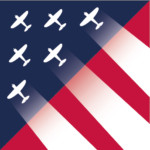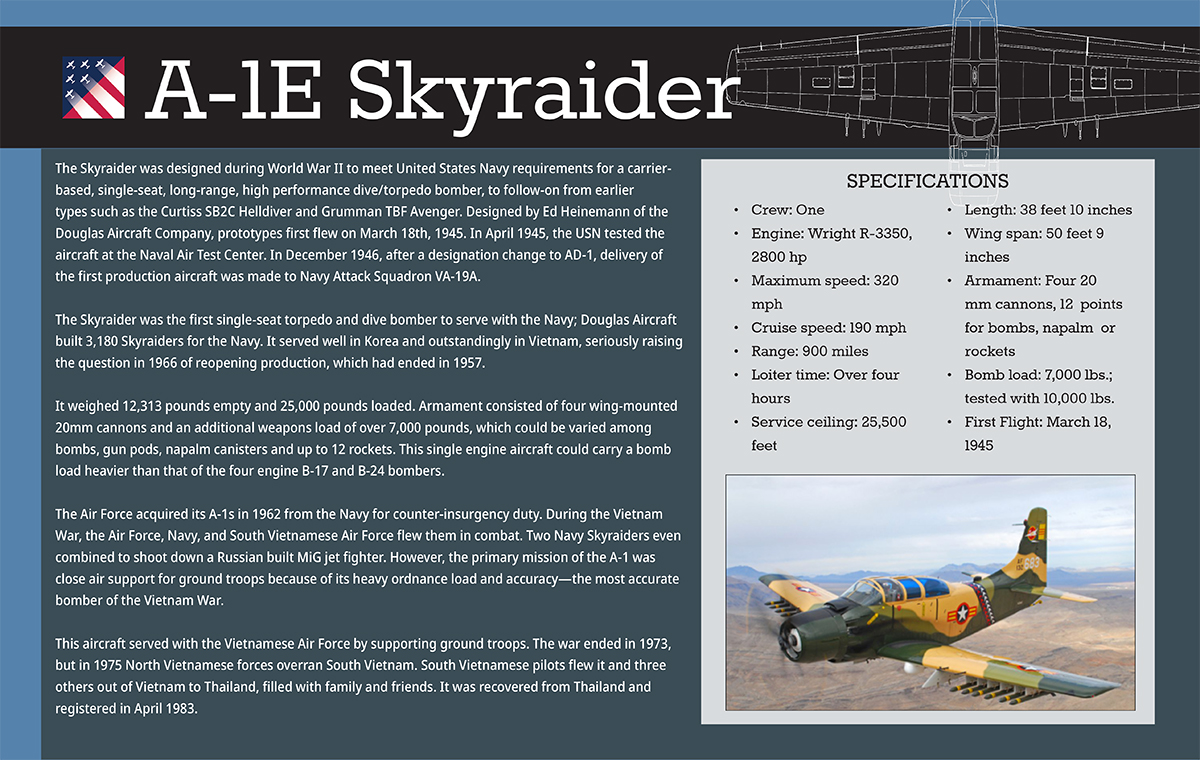The Skyraider was designed during World War II to meet United States Navy requirements for a carrier-based, single-seat, long-range, high performance dive/torpedo bomber, to follow-on from earlier types such as the Curtiss SB2C Helldiver and Grumman TBF Avenger. Designed by Ed Heinemann of the Douglas Aircraft Company, prototypes first flew on March 18th, 1945. In April 1945, the USN tested the aircraft at the Naval Air Test Center. In December 1946, after a designation change to AD-1, delivery of the first production aircraft was made to Navy Attack Squadron VA-19A.
The Skyraider was the first single-seat torpedo and dive bomber to serve with the Navy; Douglas Aircraft built 3,180 Skyraiders for the Navy. It served well in Korea and outstandingly in Vietnam, seriously raising the question in 1966 of reopening production, which had ended in 1957.
It weighed 12,313 pounds empty and 25,000 pounds loaded. Armament consisted of four wing-mounted 20mm cannons and an additional weapons load of over 7,000 pounds, which could be varied among bombs, gun pods, napalm canisters and up to 12 rockets. This single engine aircraft could carry a bomb load heavier than that of the four engine B-17 and B-24 bombers.
The Air Force acquired its A-1s in 1962 from the Navy for counter-insurgency duty. During the Vietnam War, the Air Force, Navy, and South Vietnamese Air Force flew them in combat. Two Navy Skyraiders even combined to shoot down a Russian built MiG jet fighter. However, the primary mission of the A-1 was close air support for ground troops because of its heavy ordnance load and accuracy—the most accurate bomber of the Vietnam War.
This aircraft served with the Vietnamese Air Force by supporting ground troops. The war ended in 1973, but in 1975 North Vietnamese forces overran South Vietnam. South Vietnamese pilots flew it and three others out of Vietnam to Thailand, filled with family and friends. It was recovered from Thailand and registered in April 1983.


